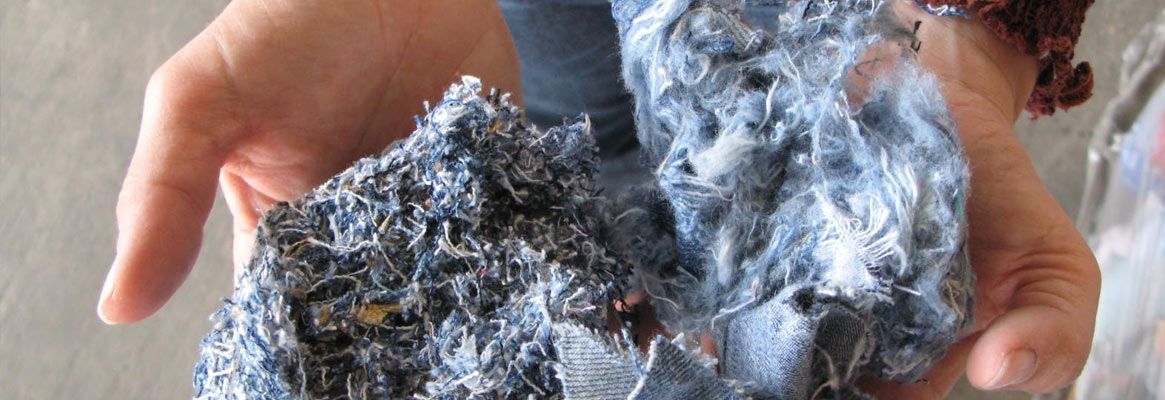Recycling fiber

Source: http://www.textilefabric.com
How would you respond if your child walked through the door and asked, "How many soda pop bottles does it take to cover a sofa?" They are not setting you up for a silly punch line. Rather, the answer is no joke. It takes approximately 200 bottles which otherwise would lie dormant in a landfill. Approximately nine billion plastic bottles are produced annually in the U.S. Your child could probably even tell you this is enough to circle the earth 50 times. Sadly, about two-thirds of these bottles end up in a landfill or incinerator.
Recycled plastic bottles are now being transformed into fiber produced for the apparel and home furnishings industries. In 1993, Wellman, Inc., introduced EcoSpun, a revolutionary fiber made from 100 percent recycled plastic soda, water and food containers. The United Nations awarded Wellman with the first Fashion Industry Award for Environmental Excellence, effectively focusing worldwide attention on EcoSpun. Until EcoSpun, no company had developed desirable or appealing post-consumer recycled fibers for apparel manufacturers. Since, the revolutionary new concept has fast become the recycling success story of our lifetime and is one of the most successful and important fiber introductions in this century.
These recycled fabrics are made from post consumer PET containers. Because these are primarily food containers, the raw materials used to produce the plastic are rigorously controlled by the Food and Drug Administration and thus considered exceptionally high quality plastic. To be made into fabric, the bottles are cleaned, chopped, melted and then extruded into fibers.
Plastic-derived fabrics have superior insulating properties. Many of the end uses are fabrics and apparel for outdoor sporting activities. In fact, recycled fabrics were first introduced as outdoor apparel fabrics. Ongoing research has lead to broader applications in everything from thermal underwear and knapsacks, to sweaters and socks. Mail order catalogs, such as L.L. Bean, Lands End, Campmor and Patagonia, commonly feature items made with recycled fabrics.
From coast to coast, predominant retailers, such as Saks, Macy's, Paragon, Blue Ridge Mountain Sports, and WalMart, are carrying recycled apparel and home textiles and they're letting the consumer know they are environmentally conscious by carrying them. EcoSpun velvet, a sensuously smooth upholstery fabric, has recently been introduced to the home furnishings market, for example.
The message of EcoSpun and E.C.O. is that recycling now extends far beyond simply stacking newspapers, metal cans and plastic bottles in local recycling bins. With the growing prevalence of these fabrics hitting the market, consumers are proving that recycling can be fashionable, literally, and that it is environmentally proactive to purchase products made of recycled materials.
So, the next time you empty a soda bottle, remember to recycle - you may be putting a little fizz in the fashions you wear tomorrow.
Sources:
1) Southern Textile News, August 15, 1994
2) University of Tennessee Agricultural Newsletter, Fall 1995
3) Better Homes and Gardens, January 1996
About the Author:
The author is the President of Textile Fabric Consultants, Inc.
To read more articles on Textile, Industry, Technical Textile, Dyes & Chemicals, Machinery, Fashion,Apparel, Technology, Retail, Leather, Footwear & Jewellery, Software and General please visithttp://articles.fibre2fashion.com
To promote your company, product and services via promotional article, follow this link:http://www.fibre2fashion.com/services/article-writing-service/content-promotion-services.asp








